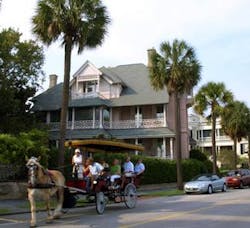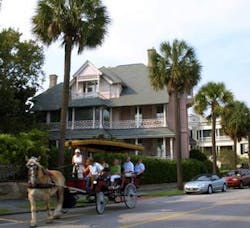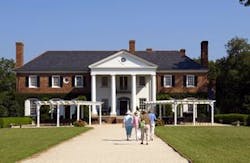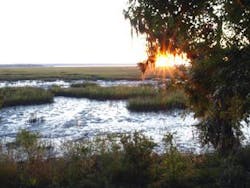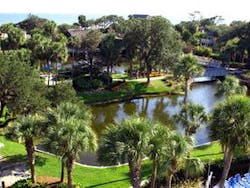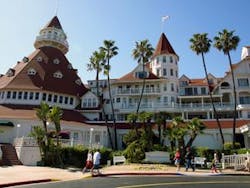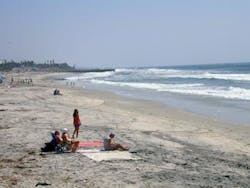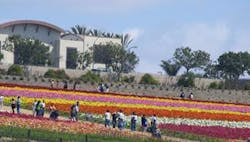What to See in SC
Or, more prosaically, what to see in South Carolina and Southern California……
Below, stories that take you beyond the cities of Charleston and San Diego to the coastal towns and inland villages that offer true getaways. What the two coasts have in common: reasonably warm winters and an abundance of great activities.
In South Carolina people say that Santa uses sunscreen and Rudolph needs a visor. This is especially true in Charleston, where December temperatures range between 41 and 62 degrees. The city itself regularly ranks among the top travel destinations in the United States, and the surrounding area is filled with historic plantations, restful retreats and golf courses galore.
We flew into the Greenville-Spartanburg International Airport in the northwest corner of the state, mainly because we were able to get an attractive airfare. We'd planned to go immediately to the coast but instead lingered in Greenville. The once-small town has done itself proud, with a tree-shaded downtown filled with galleries and some of the best food we've had in a city of only 60,000. (Note: Try the Lazy Goat for lunch, Soby's for dinner.) We spent over a day there before heading southeast to Lowcountry, where our real vacation began.
A general overview: To speak of Charleston's charm sounds corny. The words are so perfectly alliterative that they sound like an advertisement, yet they're also perfectly true. The city — at least the part of it that tourists see — has a Southern sort of magic. The homes include stately mansions with columns and porticos, smaller buildings decorated with ornate ironwork, and attached houses in pastel hues with wide shutters and varied rooflines. Horse-drawn carriages pull awed tourists down the streets, and craftsmen and women sit in the marketplace weaving traditional sweetgrass baskets. You can enjoy yourself simply by strolling the streets, but there are definitely other, in many cases lesser-known, things to do in Charleston.What you'll love:
A general overview: How can Yankees visit the South without touring a plantation? They can't — or at least, they shouldn't. Plantations, generally defined as "large farms that were dependent on slaves for labor," were essential to the economy of the Antebellum South, and as such a visit is essential to an understanding of the region. Fortunately, Charleston has four within easy driving distance.
A general overview: Palm Key Nature Getaway is all about relaxing and getting in touch with your inner self. Located among the marshlands of Knowles Island, Palm Key is about as far away from civilization as you can get by driving only 90 minutes from Charleston.
A general overview: A different type of retreat awaits on the islands south of Charleston, specifically Kiawah and Hilton Head. These well-known vacation spots offer pampered luxury along with fine golf, dining and shopping.
For more information:
www.charlestoncvb.com
www.palmkey.com
www.kiawahresort.com
www.hiltonheadisland.org
San Diego is an easy city to like. Weather that borders on idyllic, a near-tropical lushness, and roads that wind gently up hills and down canyons. Still — despite the wonders of Balboa Park's museums and the charm of the Gaslamp Quarter and Little Italy — after three days we were ready to explore the outskirts. We went south to Coronado, east to Escondido, and finally turned to explore the quaint towns and fine resorts of the area known as San Diego North.
Coronado to the southA general overview: Coronado is just a bridge-away from San Diego proper but a world away in ambiance. Although the town, which has just over 25,000 people, is charming with an abundance of restaurants and a terrific bookstore, the real reason for visiting is the Hotel del Coronado, a grand dame of a hotel that dates back to 1888.
A general overview: Escondido is a good base for exploring the Temecula Valley and Southern California Wine Country. It has the trappings of a big city but is still small-town navigable. What you'll love:
A general overview: A series of small towns hug the coast north of San Diego. They range from distinctly upscale to quasi-funky, but all offer visitors plenty of sun, sand and surf.
For more information:
www.sandiego.org
www.coronadovisitorcenter.com
www.sandiegonorth.com
In addition to travel writing, Irv and Andrea have founded LEGACY PROSE™, a company that helps people pass on their stories and values to their children and grandchildren. www.legacyprose.com
